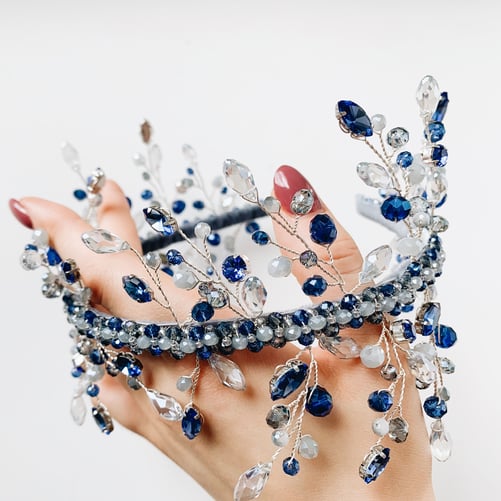
Sapphire is one of the four precious gemstones, alongside ruby, emerald, and diamond. A variety of the mineral corundum, it has long been prized for its durability and beauty, used in jewelry since the Ancient Roman period.
A quick guide to sapphire
| Specification | Details |
| Rare Colors | Cornflower Blue, Padparadscha |
| Popular Cuts | Oval, Round, and Cushion |
| Hardness | 9 on Mohs Hardness |
Where are sapphires mined?
Sapphires have been found in alluvial deposits in Ceylon (now Sri Lanka) for generations. Locations in India and Burma have produced the most famous examples of sapphires. The Zanskar Range of the Himalayas in Kashmir is known for magnificent specimens. In recent times, lovely examples have been found in the Helena area of Montana.
The most notable producer of blue sapphires is Sri Lanka, with their quality only rivaled by recent deposits that have been found in Madagascar. In many cases, Madagascar sapphires are almost indistinguishable from sapphires from Sri Lanka.
Top producers of sapphire include:
- India
- China
- Thailand
- Sri Lanka
- Madagascar
Sapphire's color spectrum
Sapphire's fame originates from the deep blue hues that naturally color the precious stone. Kashmir is known to be the location where the finest blue sapphires in the world have been mined; sapphires from Kashmir are the most prized in the world.
Sapphires from Sri Lanka are also famous, and stand out for possessing a unique shade of blue that is similar to that of cornflowers in full bloom. This quality sometimes grants the shade of these stones the name ‘cornflower blue’.
However, the sapphire is not a gemstone that appears only in shades of blue. This gemstone can be found in a wide range of colors, ranging from yellows to pinks to greens, but padparadscha, which is a pinkish orange hue, and cornflower blue are the rarest colors.

Source: Garrard
Popular cuts & sapphire's durability
The most popular cuts for a sapphire are oval, round and cushion cuts. These are commonly used for all types of jewelry like rings, pendants and earrings. However, there is no specific cut seen as ideal for sapphires as they have a wide variety of properties. Instead, most sapphires are uniquely cut to maximize the individual stone’s color and brilliance.

Sapphire, like ruby, ranks as a 9 on Mohs Hardness scale. These gems have the same hardness as they are both a variety of the mineral corundum. Sapphires have excellent toughness and are less prone to cleavage - a tendency to break when struck. As a result, they are a great choice for rings and other jewelry that is subject to daily wear.
The history and legend behind sapphire's popularity
Sapphire, adored for its beautiful colors and extreme hardness, quickly became a symbol of power and wealth across many civilizations.
The history of the sapphire dates back to the Etruscans in the 7th Century BC, and sapphire was a favorite gem in rings and brooches for medieval kings who believed it would protect them from harm and envy.
Ancient Greeks and Romans believed that blue sapphires protected their owners from envy and harm, and Greeks wore sapphire for guidance when seeking answers from an oracle. Ancient Hebrews believed that the Ten Commandments were engraved on tablets of sapphire, though historians now believe the blue gemstone referenced in the Bible may have been lapis lazuli.
During the Middle Ages, clergy members often wore blue sapphires to symbolize heaven, and people believed the gem attracted heavenly blessings. In other times and places, people instilled sapphires with the power to guard chastity, make peace between enemies, influence spirits, and reveal the secrets of oracles.
Goldsmiths in the Renaissance period began producing faceted stones set in innovative ways, with sapphire a popular choice for the wealthy. In subsequent centuries, an increase in world trade and the growth of the ‘bourgeoisie’ class created a new group of buyers, eager to show their wealth by wearing precious jewels.
Therefore, sapphire has long been associated with wealth, royalty and romance. This association was reinforced in 1981, when Prince Charles gave a blue sapphire engagement ring to Lady Diana Spencer. Until her death in 1997, Princess Di, as she was known, charmed and captivated the world, and her sapphire ring helped to link modern events with history and fairy tales.

Sapphire's use in jewelry today
The popularity of sapphires has long been present in jewelry, but a resurgence of the blue sapphire in engagement rings can be attributed to Kate Middleton’s blue sapphire engagement ring. Since then, blue sapphires have become one of the most preferred gemstones when it comes to designing an engagement ring.
Similar to emeralds, sapphires are viewed as a classic look and often used in vintage-inspired pieces - for example, as a halo ring surrounded by diamonds.




